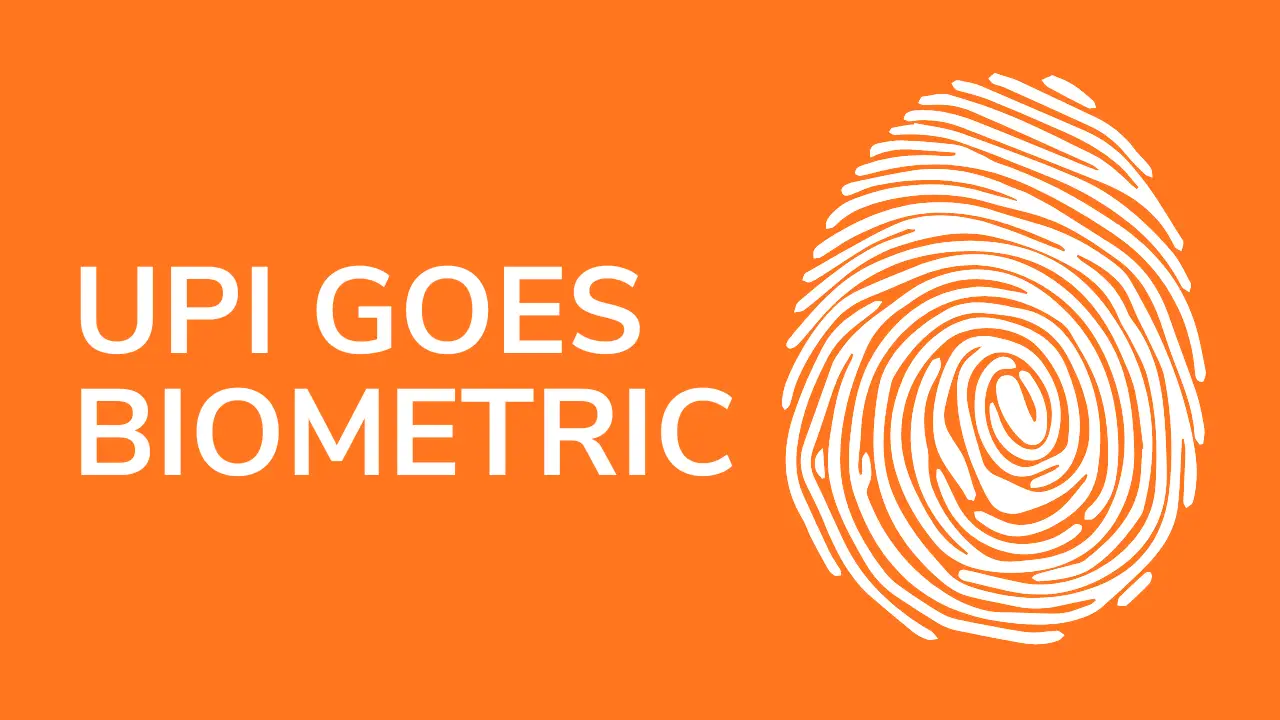Intro
A new chapter begins in India’s digital payments story. From October 8, 2025, Unified Payments Interface (UPI) transactions will support biometric authentication — allowing people to confirm payments using a fingerprint or facial scan rather than entering a PIN. This upgrade promises smoother payments while aiming to strengthen transaction security.
What’s New
Instead of typing a UPI PIN at checkout, users will have the option to approve transactions using:
- Fingerprint authentication via the phone’s built-in sensor, or
- Facial recognition using the front camera and device software.
The feature will be integrated into major UPI apps and rolled out in partnership with banks and payment infrastructure providers. Users who prefer the existing PIN system can continue to use it — biometrics will be an additional, optional method.
How It Works (Simple Breakdown)
- When you initiate a UPI payment, the app will show an option: Authenticate with Biometrics.
- If you choose it, the app triggers your device’s biometric module (fingerprint sensor or face unlock).
- The device verifies your identity locally or via secure, encrypted checks and then confirms the payment — no PIN entry required.
- If biometric verification fails, the app will provide a fallback option (enter PIN or use another allowed method).
This approach leverages the device’s existing biometric capabilities — no extra hardware for users to buy.
Benefits
- Faster checkouts: Payments become near-instant without PIN typing.
- Better security against PIN theft: Biometrics are harder to duplicate than numerical codes.
- User convenience: People who struggle with remembering or entering PINs will find it easier.
- Inclusive payments: Older users and those with limited digital experience may find payments simpler.
Potential Concerns & Safeguards
While the change brings advantages, it also raises some important considerations:
- Privacy: Biometric information is highly sensitive. Systems must ensure that biometric templates are handled securely and not misused.
- Device compatibility: Some older phones may lack reliable sensors; those users will still need PINs or alternative flows.
- Authentication failures: Injuries, poor lighting, or hardware issues can cause scans to fail, so robust fallback options are essential.
- Informed consent: Apps should clearly explain how biometric auth works and obtain explicit user permission.
To address these, implementation must follow strict encryption standards, keep biometric data on-device whenever possible, and provide transparent user controls.
What Users Should Do Now
- Update UPI apps after October 8 to get the new feature.
- Enable device biometrics (fingerprint or face unlock) in your phone settings if you want to use them.
- Keep your UPI PIN active as a backup method in case biometric verification fails.
- Read permissions carefully when an app requests biometric access — allow only trusted apps.
- Contact your bank or app provider if you face verification or setup problems.
Impact on Payments & Future Outlook
This change moves India closer to a passwordless payment model, where identity verification becomes seamless and faster. If widely adopted, biometric UPI could reduce checkout friction, lower certain kinds of fraud, and make digital payments more accessible to people who struggle with PINs.
Over time, passwordless authentication could expand into other online services and in-store experiences — marking a shift toward identity-centric, user-friendly finance.
Conclusion
Allowing biometric authentication for UPI from October 8 is a significant step toward faster, more secure, and more user-friendly payments. When implemented with strong privacy protections and sensible fallbacks, biometric UPI can simplify everyday transactions while maintaining safety. As the feature rolls out, users should stay informed, update their apps, and choose the authentication method that best suits their needs.

